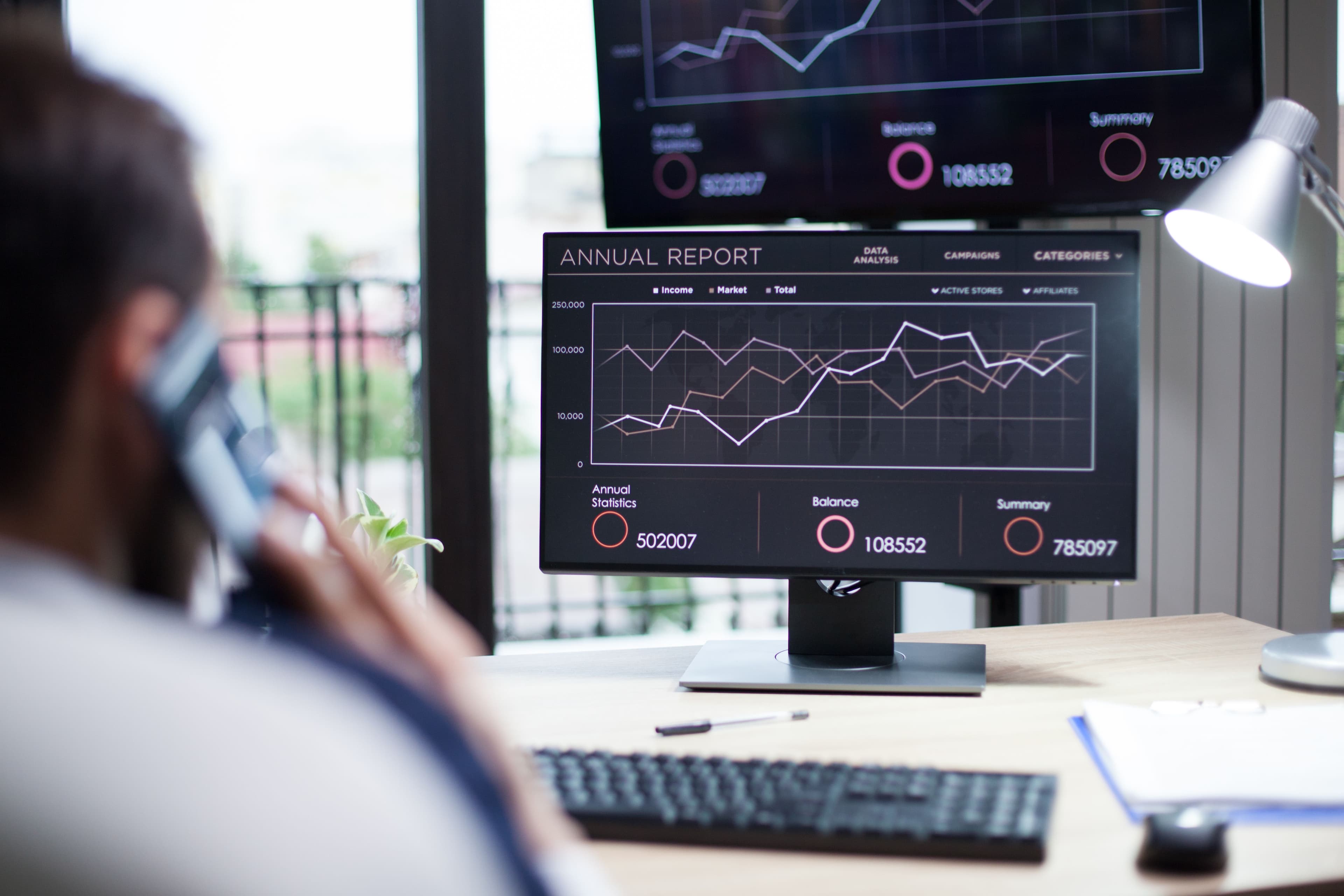AI Dashboards: From Data Chaos to Clarity
Are you drowning in data? Do you spend hours sifting through spreadsheets, struggling to find the information you need to make critical decisions? You’re not alone. In today's data-driven world, businesses are overwhelmed with information. The challenge isn't a lack of data; it's a lack of clarity. That's where the power of AI dashboards comes in, transforming data chaos into actionable insights.
The Problem: Data Overload and Its Consequences
The sheer volume of data generated daily is staggering. Consider the following statistics:
- Exponential Growth: The amount of data created, captured, copied, and consumed globally is predicted to reach 181 zettabytes by 2025 (source: Statista). This represents an enormous amount of information that can overwhelm even the most sophisticated analysts.
- Difficulty in Analysis: A survey by Deloitte found that only 38% of companies feel they are effective at analyzing their data. Many businesses struggle to extract meaningful insights from their data, leading to missed opportunities and poor decision-making.
- Time-Consuming Manual Processes: Manually collecting, cleaning, and analyzing data is incredibly time-consuming. This limits the time analysts can spend on higher-value tasks like strategic planning and innovation.
These challenges result in:
- Delayed Decision-Making: Slow analysis means slow decisions, leading to missed opportunities and a reactive approach to challenges.
- Missed Opportunities: Important insights might be buried within the data, undiscovered and unexploited.
- Inefficient Resource Allocation: Without clear insights, resources are often allocated based on gut feeling rather than data-driven evidence, leading to wasted investments and decreased efficiency.
AI Dashboards: The Solution for Clarity
AI dashboards leverage the power of artificial intelligence to automate and streamline data analysis, turning raw data into easy-to-understand, interactive visualizations. They provide real-time insights, enabling users to make informed decisions quickly and confidently. Here's how AI dashboards excel:
Automated Data Processing
- Data Collection and Integration: AI tools can automatically collect data from various sources, including databases, spreadsheets, and cloud applications. They integrate this data into a unified view.
- Data Cleaning and Transformation: AI algorithms can identify and correct errors in data, ensuring accuracy and reliability. They also transform the data into a format suitable for analysis.
Intelligent Analysis and Insights
- Advanced Analytics: AI algorithms, including machine learning, can uncover hidden patterns and trends within the data that human analysts might miss.
- Predictive Analytics: AI dashboards can forecast future outcomes based on historical data, allowing businesses to anticipate challenges and opportunities.
- Natural Language Processing (NLP): NLP allows users to interact with the dashboard using plain language queries, making data analysis more accessible to non-technical users.
Interactive Visualization and Reporting
- Customizable Dashboards: Users can customize dashboards to display the most relevant information for their specific needs.
- Interactive Visualizations: Interactive charts, graphs, and maps enable users to explore data and identify key insights easily.
- Automated Reporting: AI dashboards can automatically generate reports and summaries, saving time and effort.
Real-World Examples of AI Dashboard Success
Let's look at some practical examples of AI dashboards in action:
- Retail: Retailers use AI dashboards to analyze sales data, customer behavior, and inventory levels in real-time. This enables them to optimize product placement, personalize marketing campaigns, and manage inventory more efficiently. For example, an AI dashboard might highlight a sudden increase in sales of a particular product, triggering an automatic replenishment order to avoid stockouts.
- Healthcare: Hospitals utilize AI dashboards to track patient data, monitor vital signs, and predict potential health risks. This enables medical professionals to provide proactive care and improve patient outcomes. An AI dashboard might flag a patient at risk of a fall based on analysis of gait and vital sign data.
- Finance: Financial institutions use AI dashboards to monitor market trends, detect fraud, and assess risk. They can also be used for real-time portfolio performance analysis. An AI dashboard could flag suspicious transaction patterns, indicating potential fraud.
- Manufacturing: Manufacturers use AI dashboards to monitor production processes, identify bottlenecks, and improve operational efficiency. They can track machine performance, predict equipment failures, and optimize resource allocation. An AI dashboard could provide a real-time view of production output, immediately alerting to slowdowns or malfunctions.
Implementing AI Dashboards: A Practical Guide
Successfully implementing an AI dashboard involves several key steps:
- Define Your Goals: What questions do you want your dashboard to answer? What key performance indicators (KPIs) are most important to your business? Define clear goals to ensure the dashboard addresses the right problems.
- Choose the Right Tools: Select the AI dashboard platform that best suits your needs and budget. Consider factors like data integration capabilities, visualization options, and ease of use.
- Prepare Your Data: Ensure your data is clean, accurate, and properly formatted. This might involve data cleaning, transformation, and integration from multiple sources.
- Build Your Dashboard: Design your dashboard with user-friendliness in mind. Use clear and concise visualizations, and make sure the dashboard is easy to navigate.
- Train Your Users: Provide training to ensure users understand how to use the dashboard and interpret the insights it provides.
- Iterate and Improve: Regularly review your dashboard and make adjustments based on user feedback and changing business needs. Continuously refine and update to maximize its value.
Conclusion: Embrace the AI Dashboard Revolution
AI dashboards are transforming the way businesses operate, providing the clarity needed to thrive in today's data-driven environment. By automating data processing, providing intelligent insights, and offering interactive visualizations, AI dashboards empower decision-makers to make informed choices quickly and efficiently.
Ready to escape the data chaos and unlock the power of your information? Start by defining your needs, exploring available AI dashboard platforms, and planning your implementation. The future of data analysis is here, and it's more accessible and insightful than ever. Embrace the AI dashboard revolution and gain a competitive edge in your industry.
